How Telescopes Light Up the Invisible Parts of Our Universe, Letting Us Peek Back in Time
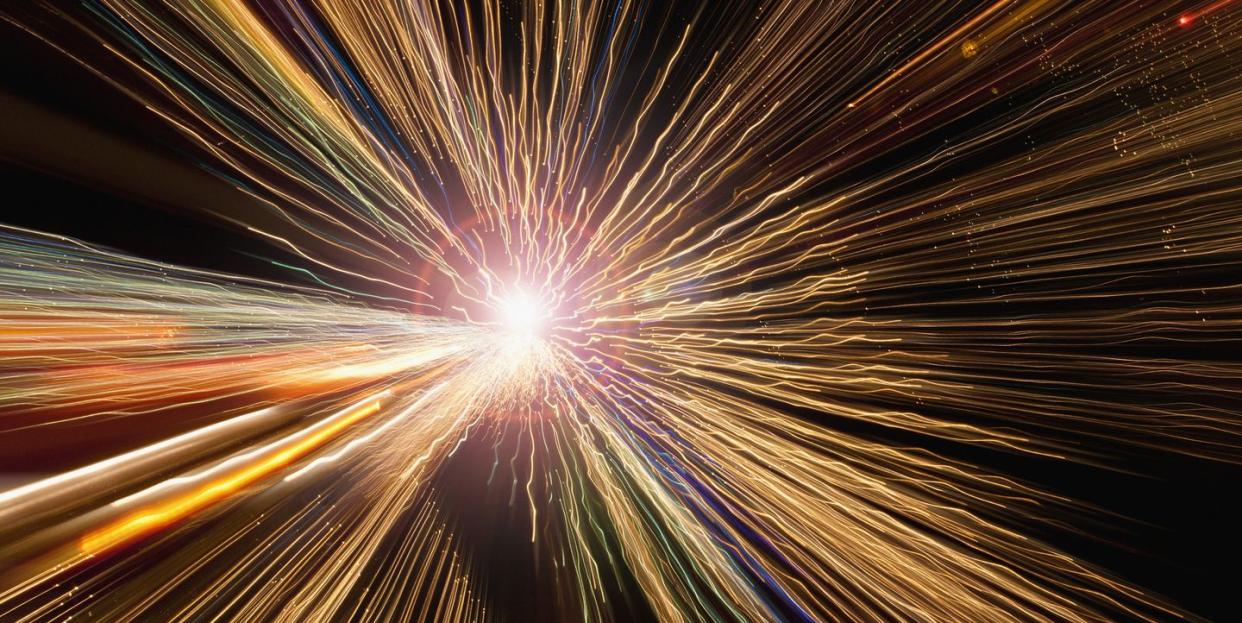
We investigate the universe through multiple wavelengths across the electromagnetic spectrum.
Our eyes can see only a tiny fraction of these wavelengths, but our instruments enable us to learn far more.
Check out how our telescopes detect different wavelengths of light from space.
Light travels only one way: in a straight line. But the path it takes from Point A to Point B is always a waveform, with higher-energy light traveling in shorter wavelengths. Photons, which are tiny parcels of energy, have been traveling across the universe since they first exploded from the Big Bang. They always travel through the vacuum of space at 186,400 miles per second—the speed of light—which is faster than anything else.
✨ You love the cosmos. So do we. Let’s nerd out over it together—join Pop Mech Pro.
Too bad we can glimpse only about 0.0035 percent of the light in the universe with our naked eyes. Humans can perceive just a tiny sliver of the electromagnetic spectrum: wavelengths from about 380 to 750 nanometers. This is what we call the visible part of the electromagnetic spectrum. The universe may be lovely to look at in this band, but our vision skips right over vast ranges of wavelengths that are either shorter or longer than this limited range. On either side of the visible band lies evidence of interstellar gas clouds, the hottest stars in the universe, gas clouds between galaxies, the gas that rushes into black holes, and much more.
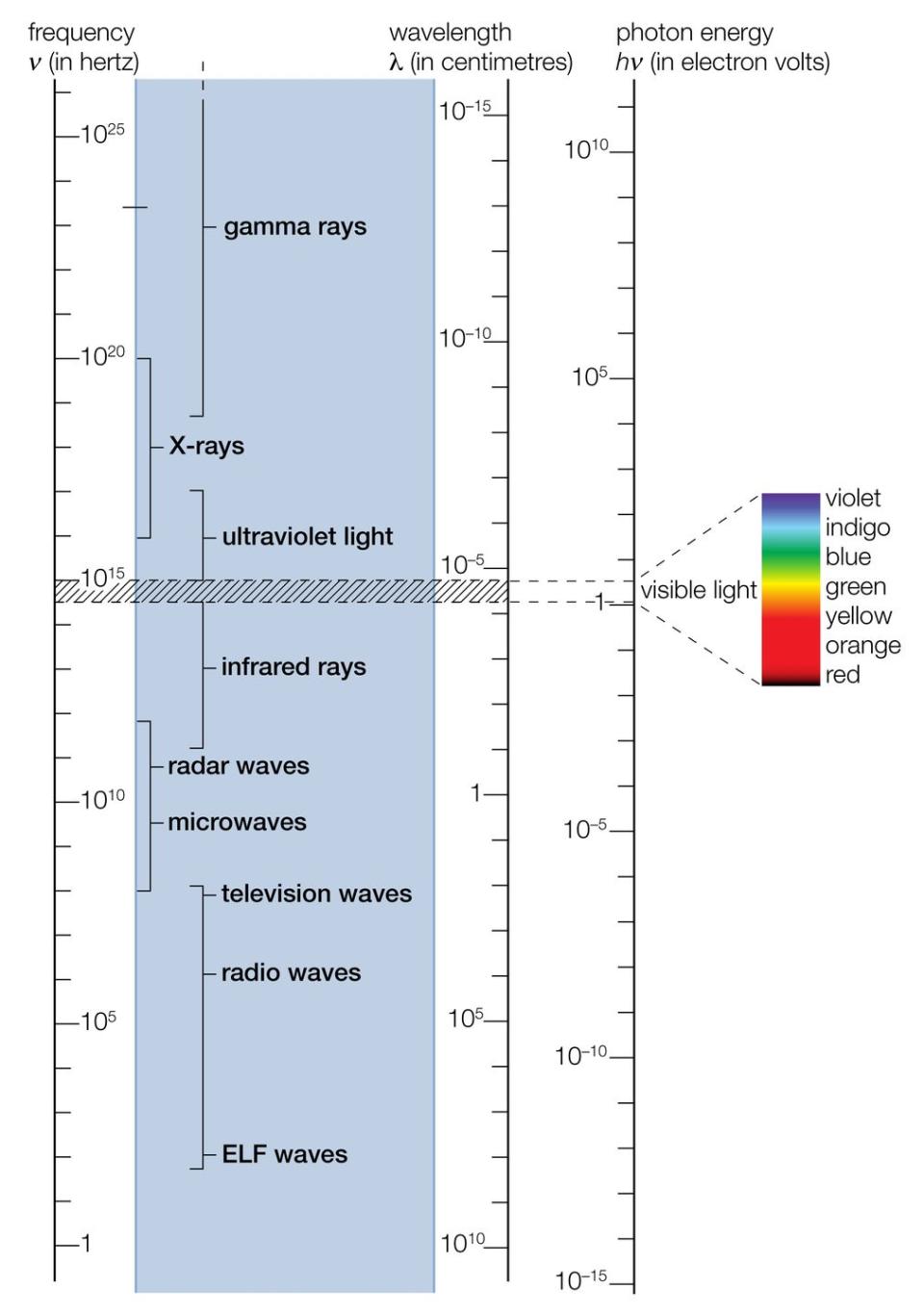
Fortunately, telescopes allow us to see what would otherwise remain hidden. To perceive gas clouds between stars and galaxies, we use detectors that can capture infrared wavelengths. Super-hot stars require instruments that see short, ultraviolet wavelengths. To see the gas clouds between galaxies, we need X-ray detectors.
We’ve been using telescopes designed to reveal the invisible parts of the cosmos for more than 60 years. Because Earth’s atmosphere absorbs most wavelengths of light, many of our telescopes must observe the cosmos from orbit or outer space. Here’s a snapshot of how we use specialized detectors to explore how light travels across the universe.
Infrared Waves
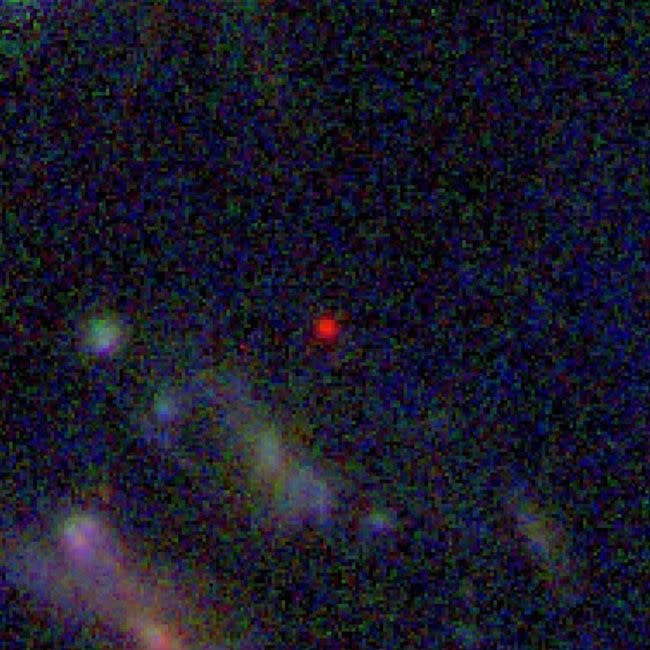
We can’t see infrared waves, but we can feel them as heat. A sensitive detector like the James Webb Space Telescope can discern this thermal energy from far across the universe. But we use infrared in more down-to-Earth ways as well. For example, remote-control devices work by sending infrared signals at about 940 nanometers to your television or stereo. These heat waves also emanate from incubators to help hatch a chick or keep a pet reptile warm. As a warm being, you radiate infrared waves too; a person using night vision goggles can see you, because the goggles turn infrared energy into false-color optical energy that your eyes can perceive. Infrared telescopes let us see outer space in a similar way.
Astronomers began the first sky surveys with infrared telescopes in the 1960s and 1970s. Webb, launched in 2021, takes advantage of the infrared spectrum to probe the deepest regions of the universe. Orbiting the sun at a truly cold expanse—about one million miles from Earth—Webb has three infrared detectors with the ability to peer farther back in time than any other telescope has so far.
Its primary imaging device, the Near Infrared Camera (NIRCam), observes the universe through detectors tuned to incoming wavelengths ranging from 0.6 to 5 microns, ideal for seeing light from the universe’s earliest stars and galaxies. Webb’s Mid-Infrared Instrument (MIRI) covers the wavelength range from 5 to 28 microns, its sensitive detectors collecting the redshifted light of distant galaxies. Conveniently for us, infrared passes more cleanly through deep space gas and dust clouds, revealing the objects behind them; for this and many other reasons, the infrared spectrum has gained a crucial foothold in our cosmic investigations. Earth-orbiting satellites like NASA’s Wide Field Infrared Survey Telescope (WFIRST) observe deep space via longer infrared wavelengths, too.
Yet, when stars first form, they mostly issue ultraviolet light. So why don’t we use ultraviolet detectors to find distant galaxies? It’s because the universe has been stretching since its beginning, and the light that travels through it has been stretching, too; every planet, star, and galaxy continually moves away from everything else. By the time light from GLASS-z13—formed 300 million years after the Big Bang—reaches our telescopes, it has been traveling for more than 13 billion years, a vast distance all the way from a younger universe. The light may have started as ultraviolet waves, but over vast scales of time and space, it ended up as infrared. So, this fledgling galaxy appears as a red dot to NIRCam. We are gazing back in time at a galaxy that is rushing away from us.
Radio Waves
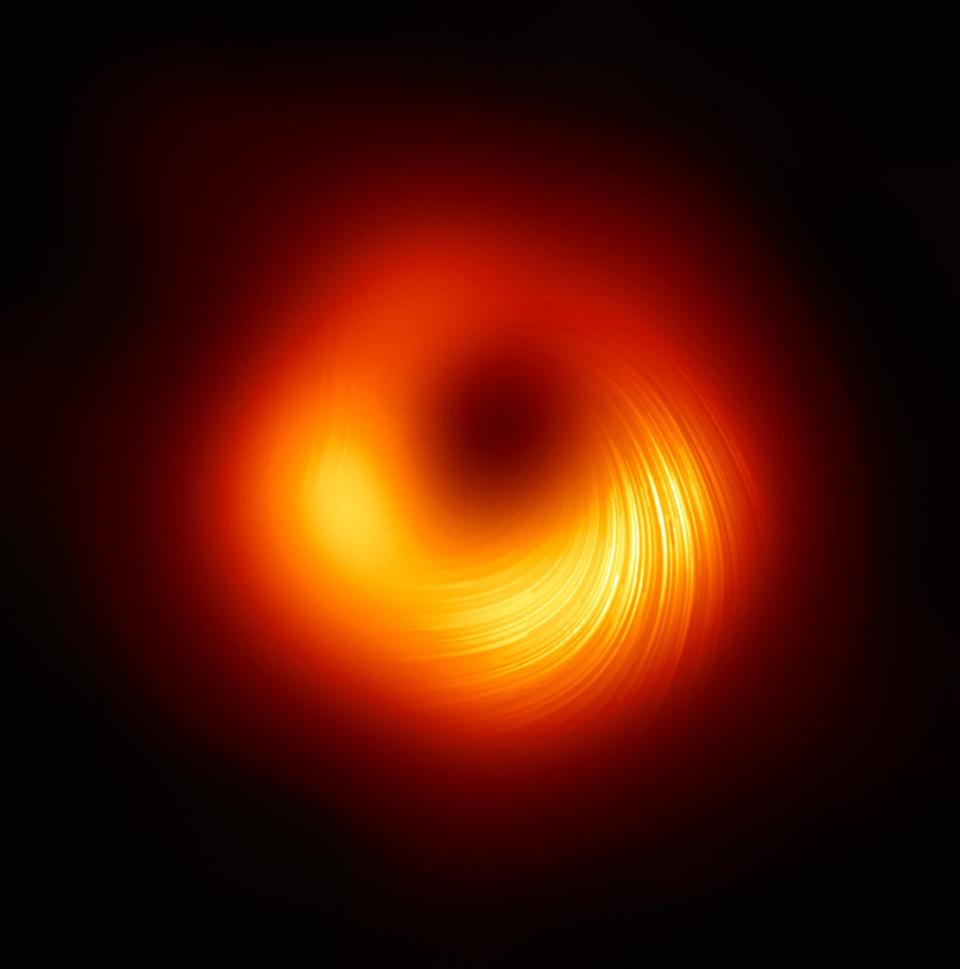
If we could see the night sky only through radio waves, we would notice swaths of supernovas, pulsars, quasars, and gassy star-forming regions instead of the usual pinprick fairy lights of stars and planets.
Tools like the Arecibo Observatory in Puerto Rico can do the job our eyes can’t: detect some of the longest electromagnetic waves in the universe. Radio waves are typically the length of a football field, but they can be even longer than our planet’s diameter. Though the 1,000-foot-wide dish at Arecibo collapsed in 2020 due to structural problems, other large telescopes carry on the work of looking at radio waves from space. Large radio telescopes are special because they actually employ many smaller dishes, integrating their data to produce a really sharp image.
Unlike optical astronomy, ground-based radio telescopes don’t need to contend with clouds and rain. They can make out the composition, structure, and motion of planets and stars no matter the weather. However, the dishes of radio telescopes need to be much larger than optical ones to generate a comparable image, since radio waves are so long. The Parkes Observatory’s dish is 64 meters wide, but its imaging is comparable to a small backyard optical telescope, according to NASA.
Eight different radio telescopes all over the world coordinated their observations for the Event Horizon Telescope in 2019 to put together the eye-opening image of a black hole in the heart of the M87 galaxy (above).
Ultraviolet Waves
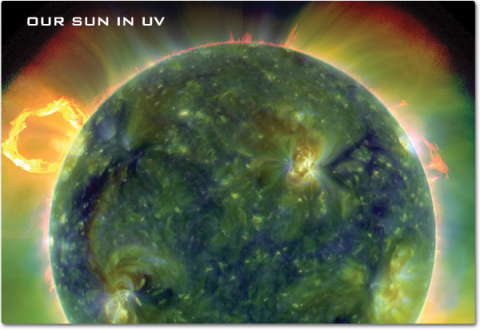
You may be most familiar with ultraviolet, or UV rays, in warnings to use sunscreen. The sun is our greatest local emitter of these higher-frequency, shorter wavelengths just beyond the human visible spectrum, ranging from 100 to 400 nanometers. The Hubble Space Telescope has been our main instrument for observing UV light from space, including young stars forming in Spiral Galaxy NGC 3627, the auroras of Jupiter, and a giant cloud of hydrogen evaporating from an exoplanet that is reacting to its star’s extreme radiation.
Our sun and other stars emit a full range of UV light, telling astronomers how relatively hot or cool they are according to the subdivisions of ultraviolet radiation: near ultraviolet, middle ultraviolet, far ultraviolet, and extreme ultraviolet. Applying a false-color visible light composite lets us see with our own eyes the differences in a star’s gas temperatures.
Hubble’s Wide Field Camera 3 (WFC3) breaks down ultraviolet light into specific present colors with filters. “Science visuals developers assign primary colors and reconstruct the data into a picture our eyes can clearly identify,” according to the Hubble website. Using image-processing software, astronomers and even amateur enthusiasts can turn the UV data into images that are not only beautiful, but also informative.
X-Ray Light
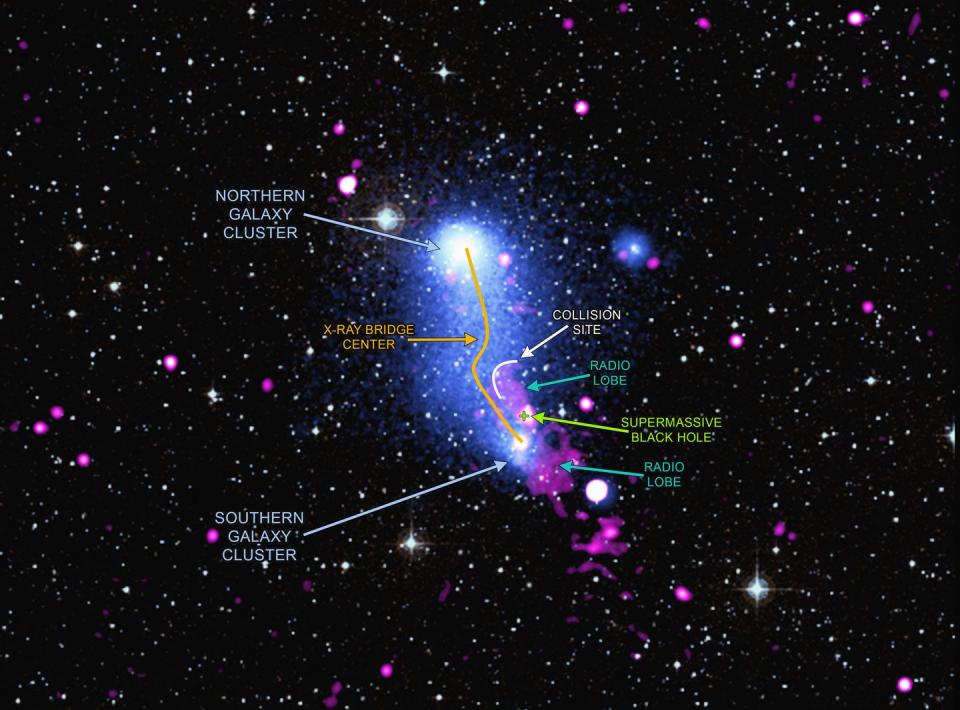
Since 1999, the orbiting Chandra X-Ray Observatory is the most sensitive radio telescope ever built. During one observation that lasted a few hours, its X-ray vision saw only four photons from a galaxy 240 million light-years away, but it was enough to ascertain a novel type of exploding star. The observatory, located 86,500 miles above Earth, can produce detailed, full-color images of hot X-ray-emitting objects, like supernovas, clusters of galaxies and gases, and jets of energy surrounding black holes that are millions of degrees Celsius. It can also measure the intensity of an individual X-ray wavelength, which ranges from just 0.01 to 10 nanometers. Its four sensitive mirrors pick up energetic photons and then electronic detectors at the end of a 30-foot optical apparatus focus the beams of X-rays.
Closer to home, the Aurora Borealis at the poles emits X-rays too. And down on Earth, this high-frequency, low-wavelength light passes easily through the soft tissue of our bodies, but not our bones, yielding stellar X-ray images of our skeletons and teeth.
Visible Light
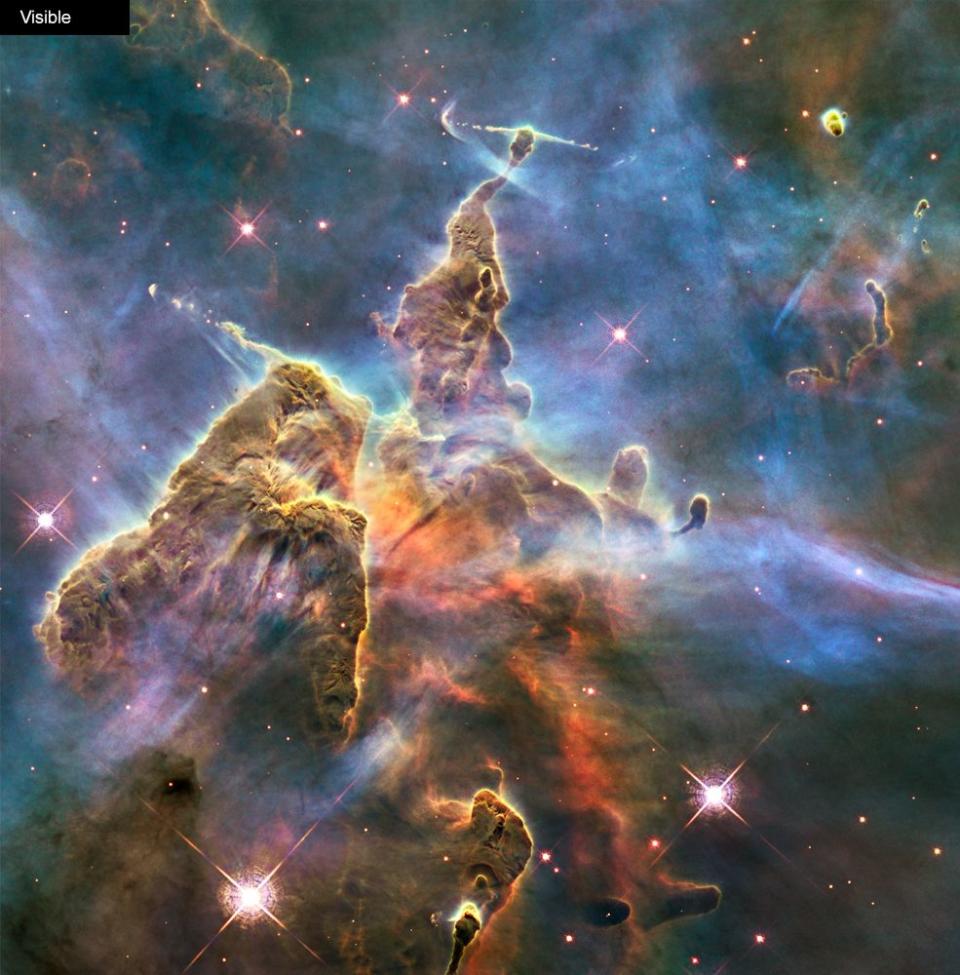
Visible color gives astronomers essential clues to a whole world of information about a star, including temperature, distance, mass, and chemical composition. The Hubble Telescope, perched 340 miles above our planet, has been a major source of visible light images of the cosmos since 1990.
Hotter objects, like young stars, radiate energy at shorter wavelengths of light; that’s why younger stars at temperatures up to 12,000 degrees Celsius, like the star Rigel, look blue to us. Astronomers can also tell the mass of a star from its color. Because mass corresponds to temperature, observers know that hot blue stars are at least three times the mass of the sun. For instance, the extremely hot, luminous blue variable star Eta Carina’s bulk is 150 times the mass of our sun, and it radiates 1,000,000 times our sun’s energy.
Our comparatively older, dimmer sun is about 5,500 degrees Celsius, so it appears yellow. At the other end of the scale, the old star Betelgeuse has been blowing off its outer layer for the past few years, and it looks red because it’s only about 3,000 degrees Celsius.
A View of Earth
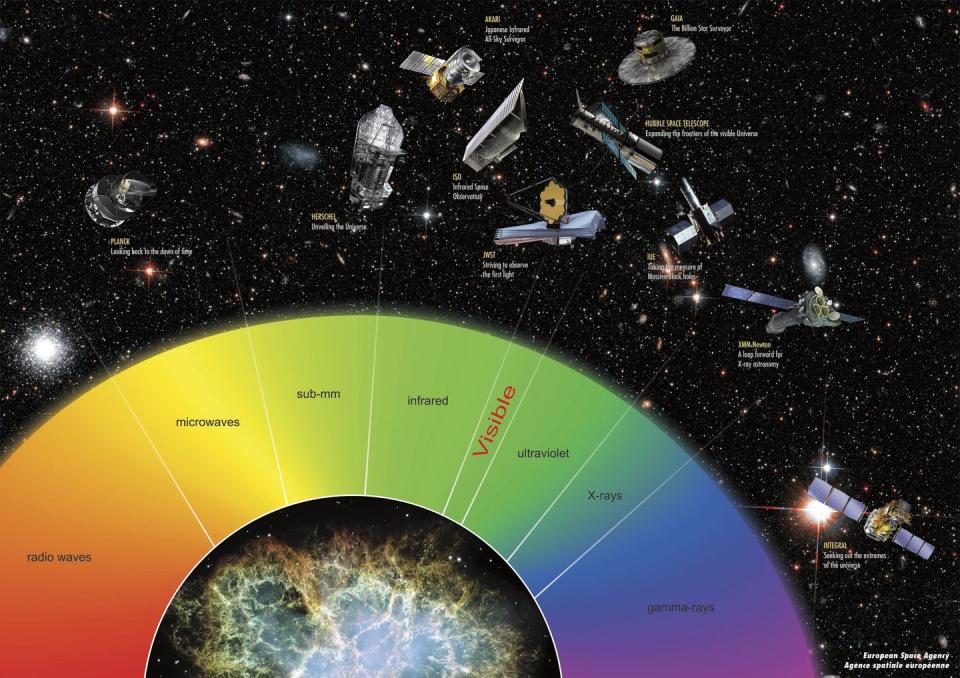
Scientists use different wavelengths of light to study phenomena closer to home, too.
Detectors in orbit can distinguish between geophysical and environmental features on Earth’s changing surface, such as volcanic action. For example, infrared light used alongside visible light detection reveals areas covered in snow, volcanic ash, and vegetation. The Moderate Resolution Imaging Spectroradiometer (MODIS) infrared instrument onboard the Aqua and Terra satellites monitors forest fire smoke and locates the source of a fire so humans don’t have to fly through smoke to evaluate the situation.
Next year, a satellite will be launched to gauge forest biomass using a special radar wavelength of about 70 centimeters that can penetrate the leafy canopy.
You Might Also Like

